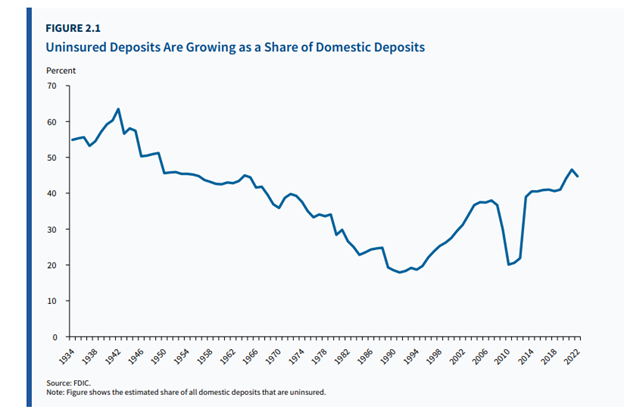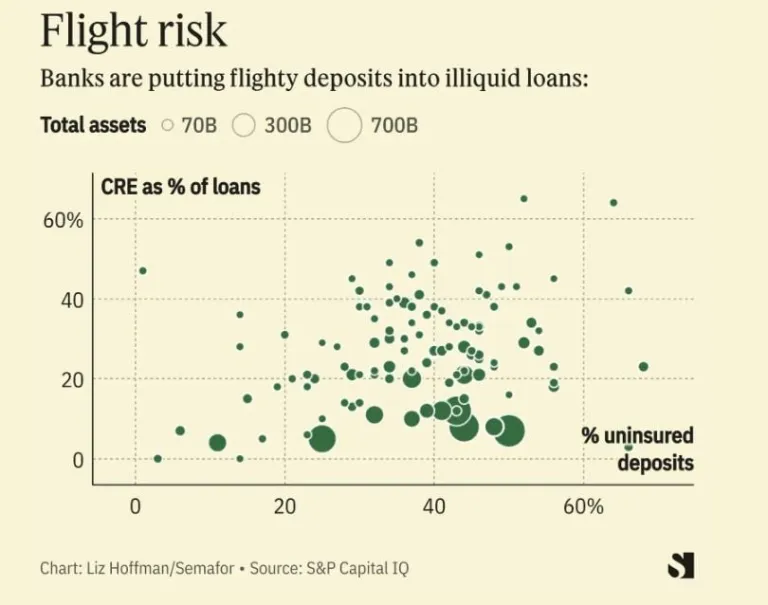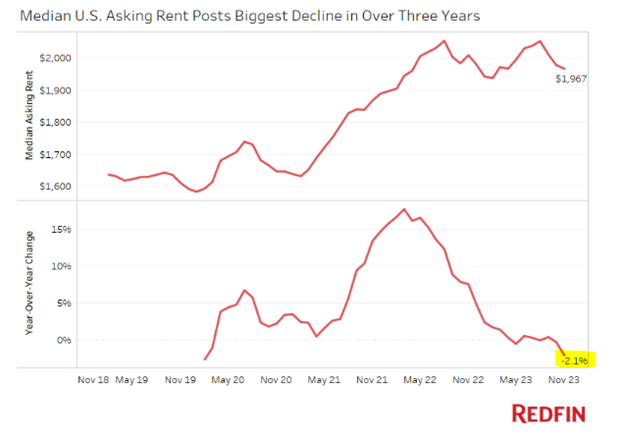Last year – around April – I wrote to you about the mounting fragility in the commercial real estate sector. And specifically how exposed the smaller-medium banks were.
High vacancy rates, declining rent prices, a glut of supply, and higher interest rates are all weighing on the sector and whoever financed them.
But to give you some context, I wrote:
“It’s important to remember that banks are black boxes – aka something with internals that are usually hidden or mysterious to onlookers. Even the best analysts don’t really know what bank loan books are truly worth. But one thing seems clear, the commercial real estate sector is growing more and more fragile. And with it, so are the smaller banks that extended credit to them. The black swans are lurking”
Now, I don’t particularly like quoting myself. But It’s important for what I am about to share with you.
And that is, the regional banking sector has been rocked after the “surprisingly” awful Q4-2023 earnings from New York Community Bancorp (NYSE: NYSE:NYCB) – sending the bank’s shares down roughly 50% (as of writing this) since January 30th, 2024.

Some of you may remember this bank. It had acquired $40 billion worth of assets from the collapsed New York Signature Bank (OTC:SBNY) last year (one of the casualties after Silicon Valley Bank imploded).
So, what led to this brutal sell-off of NYCB?
A few things – but let’s break down the key points:
- They slashed the dividend 71% to shore up their balance sheet.
- Moody’s downgraded their credit rating to junk status territory.
- Suffered a $260 million “surprise” loss in Q4-2023 reflecting loan deterioration tied to commercial real estate (specifically offices).
- The provision for loan losses surged to $552 million, more than ten times the consensus estimate.
- The bank is now considering selling distressed assets sooner than it may have preferred.
Thus, in summary, the pain stems largely from a weakening commercial real estate market that impelled NYCB to deal with mounting losses.
Of course, as NYCB absorbed the former NY Signature Bank assets, it grew in size. Which requires the bank to have higher capital requirements (meaning they need to put more cash aside).
They also announced the new appointment of Mr. Alessandro (Sandro) DiNello as Executive Chairman effective immediately on Wednesday.
But changing leadership so suddenly usually does not help confidence. If anything, it increases uncertainty.
And if there’s one thing the market hates – it’s uncertainty.
Meanwhile, NYCB’s newly appointed executive chairman said on a conference call with analysts Wednesday that his company will do what’s necessary to build capital (aka selling assets such as loans), and will reduce its commercial real estate concentration as quickly as it can.
“If we must shrink, then we will shrink,” Mr. DiNello said. “If we must sell nonstrategic assets, then we’ll do that.”
Shifting Risk Like Hot Potatoes: Buyer Beware
It is particularly important to note that – in general – I believe banks have held back from selling bundles of mortgages to private lenders or hedge funds so far.
Why? Because many of these long-term loans are underwater since rates surged.
Remember, as rates go up, bond prices fall. Thus, courtesy of the Federal Reserve’s rate hikes over the last two years, banks still have a disgusting number of unrealized losses from investments – a staggering $700 billion worth as of Q3-2023.

Thus, banks have pursued sales of shorter-dated debt such as auto loans off their books (which haven’t been impacted as much as longer-dated investments due to the rate hikes).
But still, “synthetic securitizations” have started to make their way into the US market as banks search for ways to manage their capital constraints.
Simply put, in a synthetic securitization, a bank buys credit protection on a portfolio of loans from an investor (like a hedge fund or pension fund or insurance firm). Thus, if a loan in the portfolio defaults, the investor reimburses the bank for the losses incurred on loans in that portfolio.
Think of things like credit default swaps, credit guarantees, or other derivatives contracts to try and “hedge” losses (aka shift the risk around).
Seems like a nice deal, right?
Banks get to sell off risk to reduce their exposure to specific sectors and free up cash. Meanwhile, the buyers – mainly insurance companies and hedge funds – receive attractive spreads.
Well, the problem is it just shifts the risk to a different hand. It doesn’t remove it.
And while this is an issue – there’s another point I’d like to highlight
A Game of Confidence: Uninsured Deposits Are an Issue
My big worry here is that banks can try to shift the risks as much as they’d like, but if the underlying loans – particularly commercial real estate – begin defaulting or deteriorating, it could lead to investors shying away (who would want to catch a falling knife?).
Thus, if commercial real estate woes continue (which I believe they will), it can begin affecting bank confidence.
And as a bank, there’s no worse problem than collapsing confidence.
For instance, if customers begin seeing headlines that their main bank is selling assets to raise cash, facing increased loan defaults, etc. – they may begin pulling money out.
Something like, “Huh, that’s troubling. The bank where I park all my savings just saw its share price plunge. Maybe I should move my deposits out.”
In essence, that’s how a bank will often fail – because they can’t sell assets quickly enough to raise cash for depositors wanting it out. Thus, they are forced to sell on the market at steep discounts.
But here’s where things get interesting
The deposits these banks rely on are “flighty” because more of them exceed the government’s $250,000-per-account insurance limit – meaning these are deposits that surpass the $250,000 FDIC insurance.
For example, if you had $1,000,000 in Bank A and it imploded, you would only get $250,000 back from FDIC alone. Potentially suffering a $750,000 loss.
To emphasize the scale of this point, uninsured deposits – as of May 2023 – are around 40% of all deposits (up from only 20% three decades ago). And these uninsured deposits are a lurking problem for banking stability – especially in an era of online banking (aka how fast money can be transferred around).

As we saw last spring, uninsured deposits are the first to go, which can quickly leave banks insolvent.
Making matters worse, banks plied such flighty (uninsured) deposits into illiquid loans – such as commercial real estate.

Thus, any decline in confidence that would lead to individuals yanking their money out of banks would force them to sell such illiquid loans on the market – which would likely be at steep losses.
Wrapping It Up
As we saw from NYCB’s latest results – the problem now is commercial real-estate debt – which is souring like milk sitting on a porch during an Arizona summer.
And unfortunately, I do not believe banks shifting the risk around will help.
Why? Because the landlords face higher interest rates than they can afford, tenants are cutting their leases, and landlords are struggling to raise rents as overcapacity weighs down margins.
This jump in supply has left many landlords struggling to fill vacancies, motivating them to drop asking rents in some cases (aka more supply than demand).
For instance, the median U.S. asking rent declined -2.1% year over year in November to $1,967—the biggest annual drop since February 2020—and fell -0.6% from October.
This is great for would-be renters. But for commercial real estate investors, landlords, and banks – it’s not a great thing.
It’s always a double-edged sword, right?
The point is – beware of any contagion effects from further issues in commercial real estate.
Maybe NYCB was a one-off.
But maybe it wasn’t.
As always, just some food for thought.
